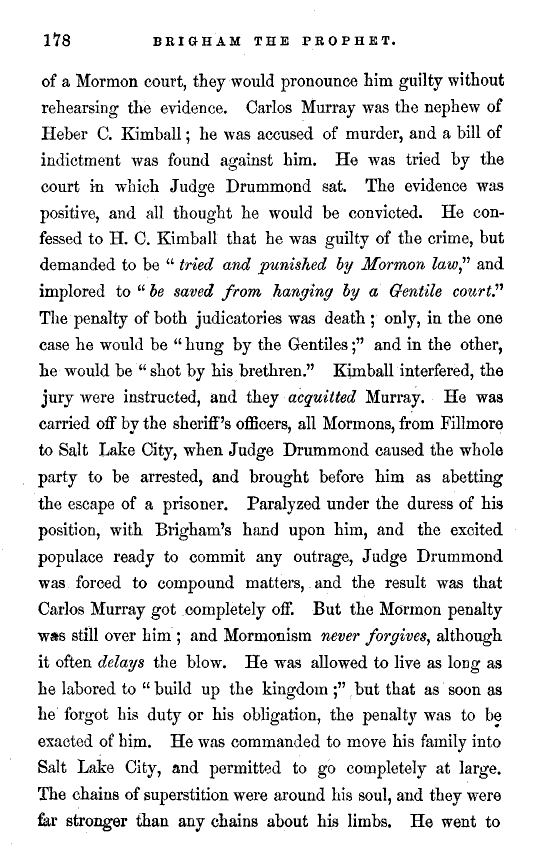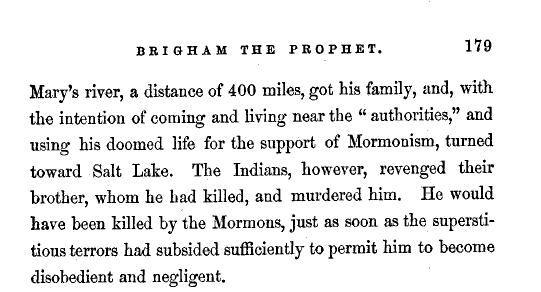JH asserts that CM would have been killed for blood atonement had the Indians not killed him first.
- Type
- Book
- Source
- John Hyde ExcommunicatedCritic
- Hearsay
- DirectUnsourced
- Reference
John Hyde, Mormonism Its Leaders and Designs (New York: W.P. Fetridge & Company, 1857), 178-179.
- Scribe/Publisher
- W. P. Fetridge & Co.
- Audience
- General Public
- Transcription
Carlos Murray was the nephew of Heber C. Kimball; he was accused of murder, and a bill of indictment was found against him. He was tried by the court in which Judge Drummond sat. The evidence was positive, and all thought he would be convicted. He confessed to H. C. Kimball that he was guilty of the crime, but demanded to be "tried and punished by Mormnon law," and implored to "be saved from hanging by a Gentile court." The penalty of both judicatories was death; only, in the one case he would be "hung by the Gentiles;" and in the other, he would be "shot by his brethren." Kimball interfered, the jury were instructed, and they acquitted Murray. He was carried off by the sheriff's officers, all Mormons, from Fillmore to Salt Lake City, when Judge Drummond caused the whole party to be arrested, and brought before him as abetting the escape of a prisoner. Paralyzed under the duress of his position, with Brigham's hand upon him, and the excited populace ready to commit any outrage, Judge Drummond was forced to compound matters, and the result was that Carlos Murray got completely off. But the Mormon penalty was still over him; and Mormonism never forgives, although it often delays the blow. He was allowed to live as long as he labored to " build up the kingdom;" but that as soon as he forgot his duty or his obligation, the penalty was to be exacted of him. He was commanded to move his family into Salt Lake City, and permitted to go completely at large. The chains of superstition were around his soul, and they were far stronger than any chains about his limbs. He went to Mary's river, a distance of 400 miles, got his family, and, with the intention of coming and living near the "authorities," and using his doomed life for the support of Mormonism, turned toward Salt Lake. The Indians, however, revenged their brother, whom he had killed, and murdered him. He would have been killed by the Mormons, just as soon as the superstitious terrors had subsided sufficiently to permit him to become disobedient and negligent.
- Citations in Mormonr Qnas
The B. H. Roberts Foundation is not owned by, operated by, or affiliated with the Church of Jesus Christ of Latter-day Saints.


